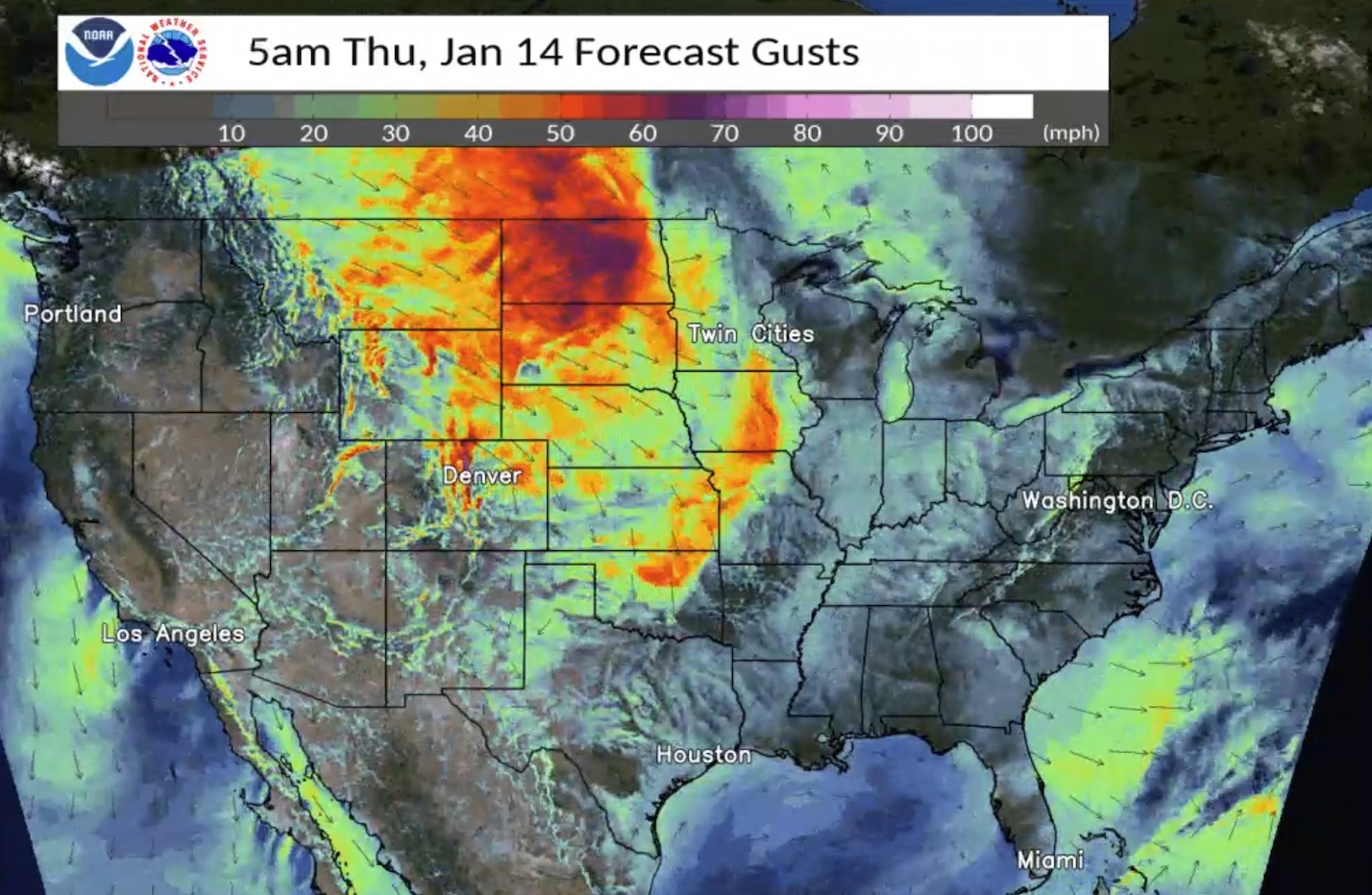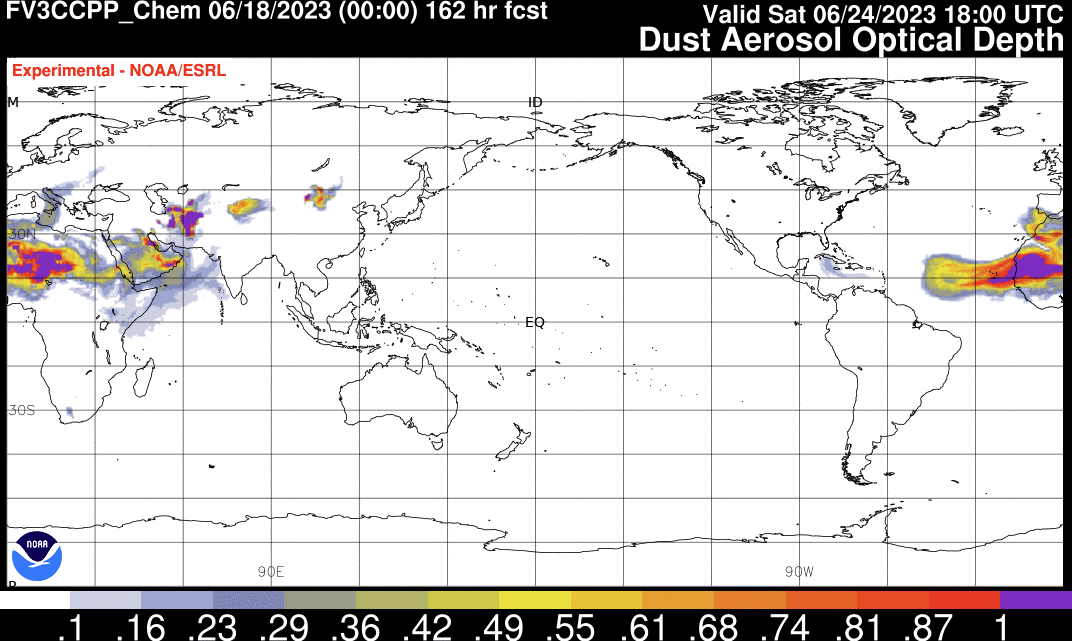Experimental Models
GSL develops pre-operational models that should not be used for operational purposes. The model websites are not supported 24/7 and may be unavailable during system outages.
Experimental Interactive map for visualizing Rapid Refresh and High-Resolution Rapid Refresh models.

- HRRR Hawaii (Experimental - 3km grid)
- HRRR Caribbean (Experimental 3km grid)
- HRRR Alaska (Operational as of 2020)
- HRRR Aviation Graphics (Experimental subhourly - forecasts every 15 minutes out to 18 hours)
- HRRR Smoke (Operational as of 2020 - 3km grid)
- HRRR Smoke Alaska (Operational as of 2020
The Rapid Refresh Forecast System (RRFS) is the National Oceanic and Atmospheric Administration’s (NOAA) next-generation convection-allowing, rapidly-updated ensemble prediction system, currently scheduled for operational implementation in 2024. The operational configuration will feature a 3 km grid covering North America and include deterministic forecasts every hour out to 18 hours, with deterministic and ensemble forecasts to 60 hours four times per day at 00, 06, 12, and 18 UTC. The RRFS will provide guidance to support forecast interests including, but not limited to, aviation, severe convective weather, renewable energy, heavy precipitation, and winter weather on timescales where rapidly-updated guidance is particularly useful. The RRFS is underpinned by the Unified Forecast System (UFS), a community-based Earth modeling initiative, and benefits from collaborative development efforts across NOAA, academia, and research institutions.
Within the NOAA model unification effort, the RRFS represents the evolution of the NAM, RAP, HRRR, and HREF systems to a new unified deterministic and ensemble storm-scale system. This new system is targeted for initial operational implementation in late 2024 as a planned replacement for the NAMnest, HRRR, HiResWindows, and HREF. While the standalone regional (SAR) FV3 model is being developed for convection-allowing forecasting of a limited area (CONUS), other possible components of the RRFS are being tested now in the experimental, WRF-based High-Resolution Rapid Refresh Ensemble (HRRRE). Experimental runs of the HRRRE at GSL are focused particularly on:- Improving 0-12 h high-resolution forecasts through ensemble-based, multi-scale data assimilation
- Producing spread in 0-36 h ensemble forecasts through initial-condition perturbations, boundary-condition perturbations, and stochastic physics.
Rapid Refresh Forecast System Smoke/Dust
RRFS Smoke/Dust is the next generation HRRR Smoke, also developed by GSL. RRFS predicts:
- Hourly Wildfire Potential
- Smoke Emissions
- Near Surface Smoke
- Vertically Integrated Smoke
- Near Surface Fine Dust
- Near Surface Course Dust
- Vertically Integrated Dust
- Visibility
Rapid Refresh (RAP) - Operational as of 2020, forecasts of weather parameters out to 48 hours on a 13km grid over North America.
- Rapid Refresh Smoke (RAP Smoke) - Operational as of 2020
- Rapid-Refresh-Chem (RAP-Chem)
RAP-Chem provides 48-hour forecasts of aerosols such as ozone, pollen, carbon monoxide, nitrous oxide, and more on a 13km grid over North America.

Global forecasts
Hurricane Forecast Improvement Project (HFIP) experimental products
Tropical cyclone track forecasts

Subseasonal-to-Seasonal Prediction
GSL research in this area addresses issues related to sources of predictability, forecast system component closures, and model physics development. We work closely with the coupled Unified Forecast System to improve this model’s forecast skill by identifying sources of model errors, reducing model biases and better representing longer-lived phenomena like the Madden-Julian Oscillation and its teleconnections.The coupled FIM-iHYCOM model is part of a multi-institutional ensemble-generating real time subseasonal (weeks 3-4) prediction system, see results at https://fim.noaa.gov/FIMano/.
The Unified Forecast System (UFS) is a community-based, coupled, comprehensive Earth modeling system. The UFS numerical applications span local to global domains and predictive time scales from sub-hourly analyses to seasonal predictions. It is designed to support the Weather Enterprise and to be the source system for NOAA‘s operational numerical weather prediction applications.
NOAA is the agency tasked with providing the official weather and climate forecasts and warnings in the United States. First and foremost, the UFS provides a framework to engage the extensive research enterprise in the US. It creates an environment to more efficiently and effectively translate research advances into operational outcomes. The UFS also enables NOAA to simplify its production suite of forecasting models from a great many independent systems, each of which has to be improved and maintained, to a single seamless system.
